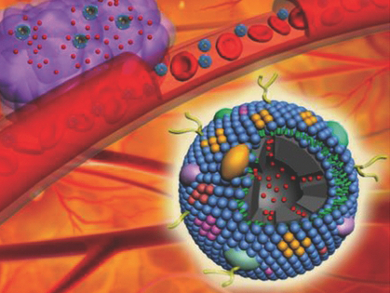Nanocapsules are widely explored as drug carriers since they provide good drug solubility across the blood vessel wall, sustained release kinetics, reduced side effects, and elevated therapeutic efficacy. Furthermore, they preferentially localize in tumor surroundings due to enhanced permeability and retention in tumor vasculatur. Functionalization, i.e., covering the surface of nanoparticles with molecular recognition moieties such as antibodies and peptides, increases the attraction to tumors further, but also makes them more prone to elimination by the immune response of the body.
Junbai Li, Chinese Academy of Science, Beijing, China, and colleagues developed nanocapsules which are surrounded or, more precisely, camouflaged by macrophage cell membranes (MPCM). The synthesis consists of four steps: deriving the MPCM from natural macrophages, preparing the silica nanocapsules, loading these with the respective drug, and finally the reconstruction of the MPCM over the nanocapsules. As a type of white blood cell, macrophages not only process long blood-circulating time but also have many receptors on their surfaces for discerning inflammation and disease.
Experiments in mice show that MPCM-camouflaged capsules loaded with the anticancer drug doxorubicin hydrochloride in fact significantly target tumors, whereas nanocapsules without disguise are rapidly cleared by the immune system.
- Macrophage Cell Membrane Camouflaged Mesoporous Silica Nanocapsules for In Vivo Cancer Therapy,
Minjun Xuan, Jingxin Shao, Luru Dai, Qiang He, Junbai Li,
Adv. Healthcare Mater. 2015.
DOI: 10.1002/adhm.201500129




